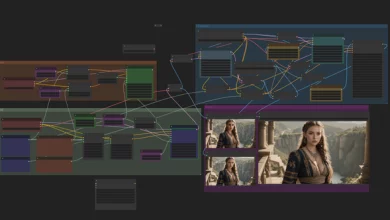
Asset management is an important activity in a business especially when there are lots of assets in the organization. When there are lots of assets, they need to be tracked so that they don’t get lost, misplaced, or theft. Some assets & equipment are helpful in daily operation.
These need maintenance so that their performance is always up and sudden asset failure does not occur. How can we know that the asset is performing or how we can boost the performance of the asset? The answer is asset management reports. These reports have all the answers you need you can identify problems and with reports assistance, you can find the solution as well. But first, let us know:
What is asset management?
Asset management is important for all industries as it allows you to monitor your assets and it tracks the performance of assets as well. Furthermore, it also assists organizations in understanding asset lifecycle. With the help of asset management, you can make a better and informed decision about assets. It can help in improving the performance by detecting unproductive assets and those assets which are taking more maintenance than required.
Basically, asset management helps in controlling, updating, managing, and monitoring assets efficiently. It starts working from procurement and disposal of assets. Overall, this software can help in saving unnecessary expenses also it can increase return on investment (ROI).
According to Statista, “The global market for fixed asset management software is forecast to grow from 3 billion U.S. dollars in 2019 to 5.2 billion U.S. dollars in 2024. Fixed asset management software is used to streamline maintenance processes, extend the longevity of assets, and improve productivity.”
Below we have mentioned a few asset management reports that are helpful to business:
Equipment performance – Reports are helpful in analyzing the performance of each piece of equipment. These equipment are costly and this is why it is important to keep them maintained. You can get reports of assets that will help you in identifying performing assets and non-performing assets. Non-performing assets are those assets that take are more maintenance and not being productive enough.
Identify productive and non-productive assets – When the organization is huge you will not know which assets are used which are not. Therefore, asset reports are analyzed to check the performance. Productive and non-productive assets are identified. You may ask, how? For this purpose, asset history is checked & analyzed that how much asset is used frequently! How frequently it is utilized! How much maintenance does it take & compare the maintenance to other assets and check if it is productive enough or not! With the help of data and reports, you can get an average idea about the productivity of each specific piece of equipment.
Asset audit – Auditing cannot be ignored if you want effective asset management in your organization. It is not only helpful in the physical verification process but also helps in eliminating ghost assets (discussed below) from the organization. With the help of reports, you can know the exact location of each asset. Furthermore, you can know the purchased price and current asset price. With the help of reports, you can do depreciation management as well. As they provide tax benefits.
Optimizing inventory – Inventory is a crucial part of every business. It does not matter to which sector your organization belongs! Inventory makes your equipment better. It plays a crucial role in maintenance. Inventory is a source of generating revenue for sectors such as manufacturing and retail etc.
Sometimes organizations suffer from loss as they either have overstock or out of stock (discussed below). However, you can avoid these issues with asset management reports and asset management software. For avoiding overstocking, you can use data and get an estimation for usage. When you are running out of stock, it alerts and notifies the team about the same. So that the team can take action accordingly.
Asset maintenance & lifecycle – It is important for organizations to understand how much money they are spending on maintenance and how much each asset is adding value to the organization. For many organizations asset, lifecycle and maintenance is a big issue. With proper records of assets, you can know when the asset was purchased and when it needs to be disposed of!
Therefore, it is important to keep track of such information however, this software can alert you about the same so you don’t have to remember manually. it is important that asset disposal is done on time because after that period breakdown failure chances are increases. With an automated system, you can plan accordingly!
Similarly, it is important to keep track of asset maintenance. Otherwise, asset breakdown can occur and it can result in a huge maintenance bill. With the maintenance reports you can find which assets can be improved and which are un-productive.
What is Overstocking & Out of Stock?
Overstocking is a major issue in inventory management. In overstocking one purchases inventory in too much quantity and it is not used utilized completely because they are wasted because either is misplaced or spoiled, inventory can be expired as well so it only leads to wastage of money. Another reason for overstocking is done so that the retailer expected the increased sales but in reality, sales are not increased as per expectation & loss occurs.
When retailer or shopkeeper does not have product left in inventory or in stock that is out of the stock issue. You not only lost potential customers but it leads to unhappy customers and overall, that impacts the bottom line.
What are Ghost Assets?
Ghost assets can eat your profits, ghost assets are those assets that are mentioned in the account books but physically there are not available. Either they are stolen, lost, or misplaced. Ghost assets can impact business badly! You will ask how? You are paying taxes for those assets which you are not even using.
If ghost assets are found in an external audit your organization might end up paying a huge penalty for overestimating the value of assets. it will impact your brand image as well in a negative way. Ghost assets occur when you do not keep track of assets. Through asset management software assets are not only tracked but also minimize the chance of occurrence of ghost assets. For this purpose, asset tracking methods are used which help in providing the real-time location of each asset.
Conclusion – Reports and analysis are very helpful in understanding the organization’s total work, their benefits. Reports can reveal the performance of each asset, how much value each asset is adding. How much money you are investing in an operation and where you can invest more in order to improve and grow your business.
Asset management software can be that missing part that you needed for a long time. Accuracy is very important in reports if accuracy is compromised all data and information will be no good for the organization. One of the most important factors of this software is that it automates the process and it provides accuracy as well.
This software has the potential to grow your business by avoiding unnecessary expenses and improving productivity and how you can boost your efficiency. You will start noticing its benefits after implementing it. It can help in extending asset life and establish compliance in the organization. Its feature of alert and notification can be used at several points (as per the need of the organization).




